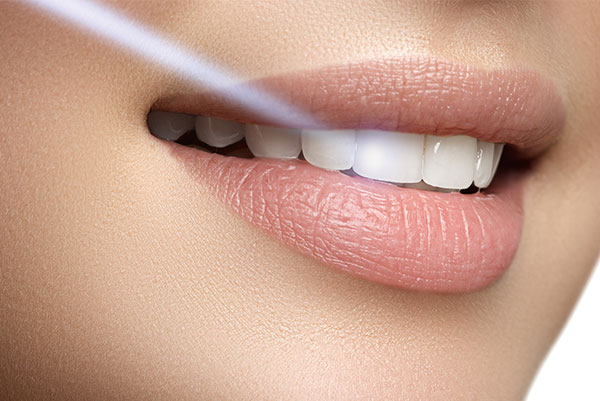Lasers in general and laser dentistry conjures a lot of images in people’s minds. There are some significant benefits as will be further explained below as well as some limitations.
How dental lasers work
In simple terms a dental laser is a device that produces laser energy and enables us to direct that energy to a specific spot in your mouth. That energy is mostly absorbed by water in the case of the Erbium-YAG laser and roughly equally by water and haemoglobin in the case of the Nd-YAG laser.
Our teeth, gum and bone tissues are filled to varying degrees with water and haemoglobin. When laser energy is absorbed by the tissue changes occur.
For example, when exposed to an Er-YAG laser burst the water in our enamel and dentine causes the tissue to “explode” (The explosion is of course very tiny so there is no danger to you) By this means a laser can be used to “cut” enamel and dentine. The same mechanism also works in bone.
One of the advantages of lasers is more selective and minimal cutting of tooth structure during removal of tooth decay. Because carious dentine (dentine that is decayed) contains more water and is softer than intact dentine, it would react more strongly to the laser energy and would be cut much more easily than the surrounding intact dentine. The laser therefore tends to cut more of the diseased tissue and less of the intact tissue. This is in contrast to a traditional dental bur (or “drill”) which will cut and remove any dentine it comes in contact with because it is harder than both intact and decayed dentine.
The same effect occurs in soft tissue (gums and the mucous membranes of the mouth) Because lasers remove the tissue very gradually and appears to exert some effect on the nerve sensation, it is actually possible to have certain types of more superficial surgery without even having to give an injection to numb the soft tissues. Something unthinkable if we were to use a scalpel for the same process.
The better healing with less swelling you can usually get from laser treatment is largely due to the more selective and controlled way in which tissues are ‘cut’. There is some research that indicates that laser energy also stimulates the healing cells and modifies the tissues is such a way that there is less contamination, less inflammation and therefore less swelling.

